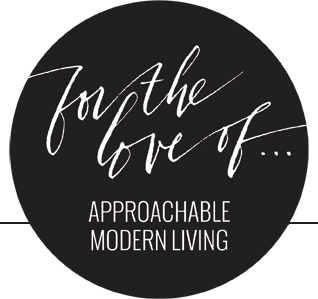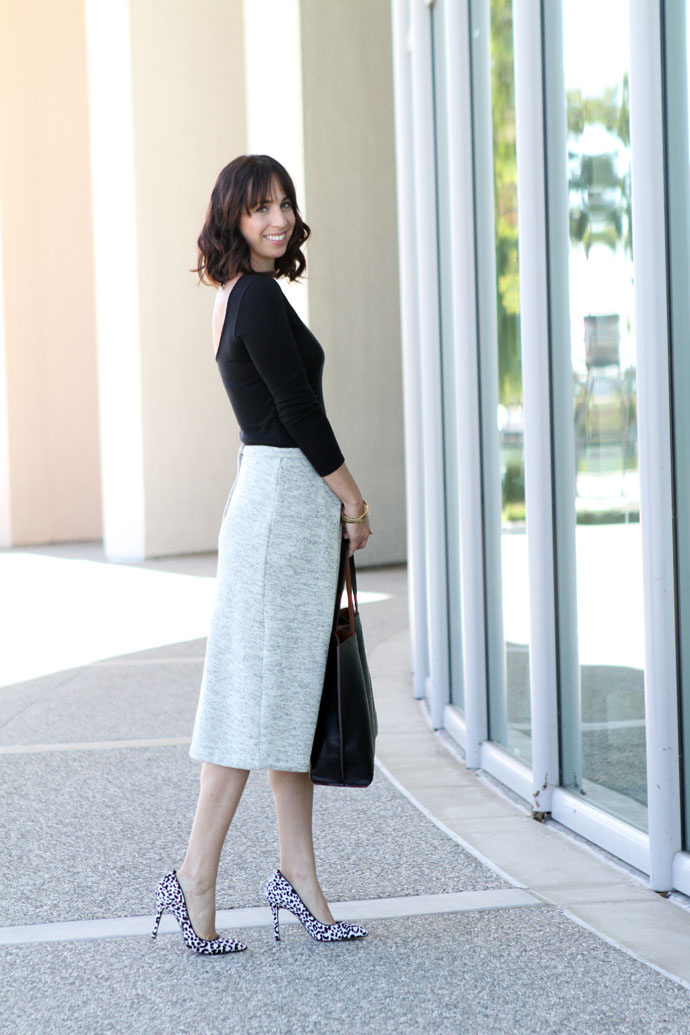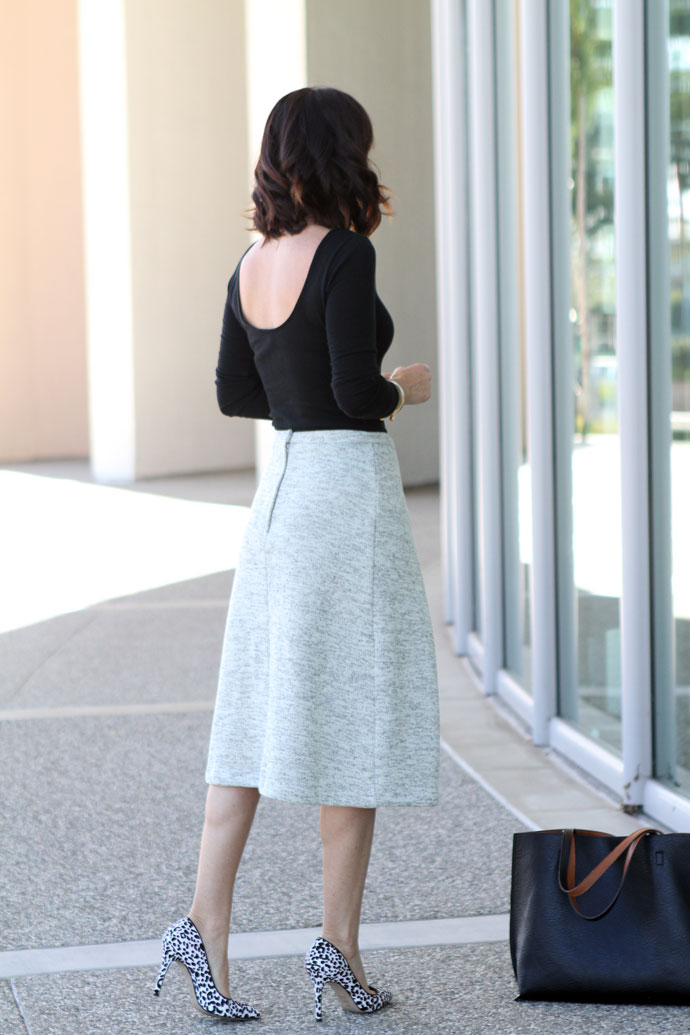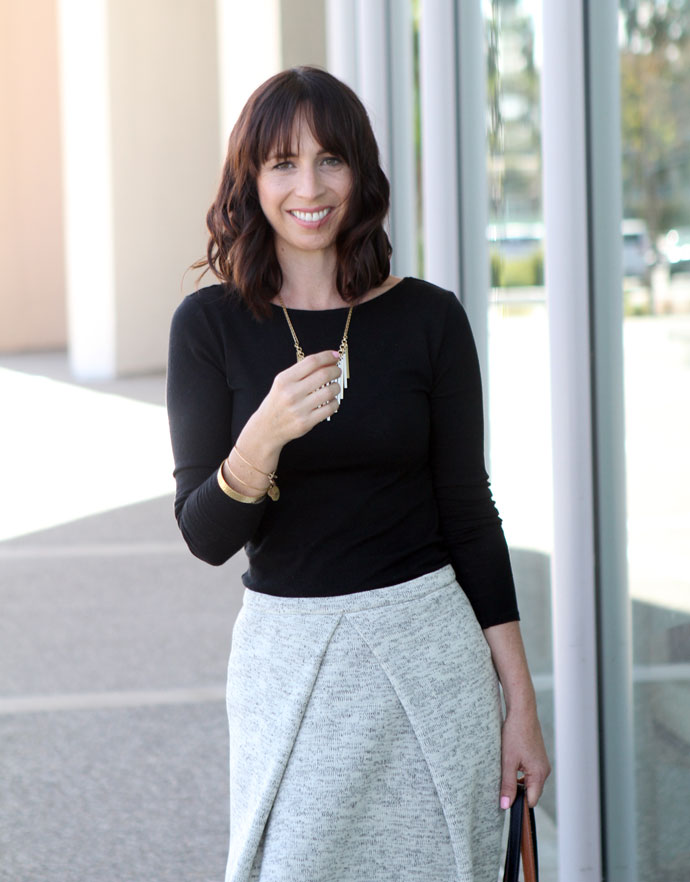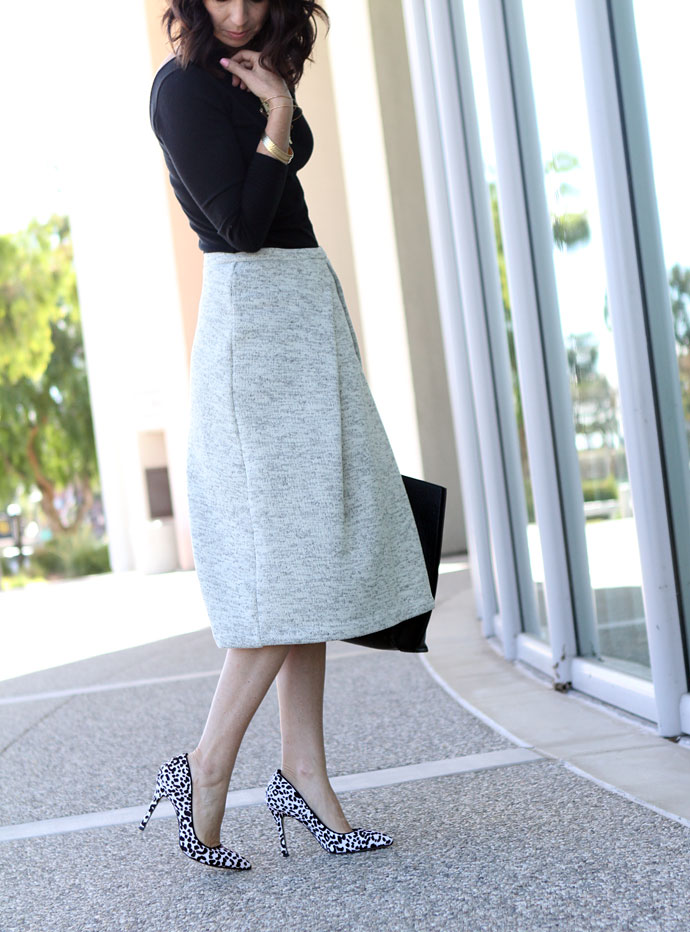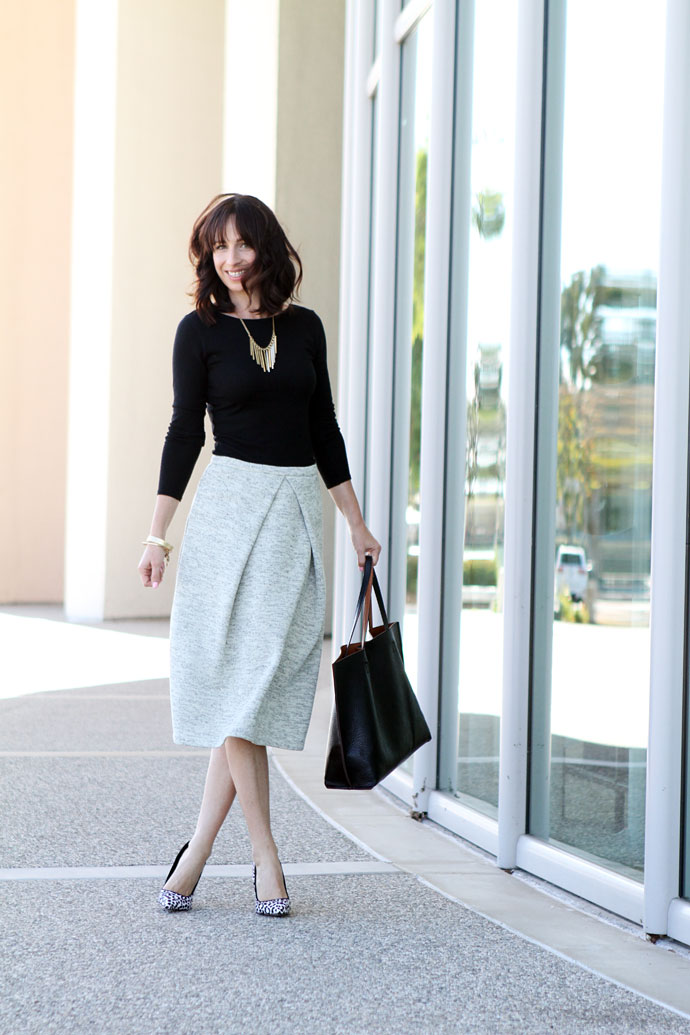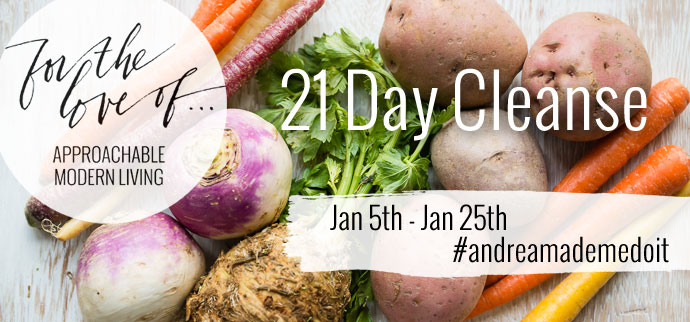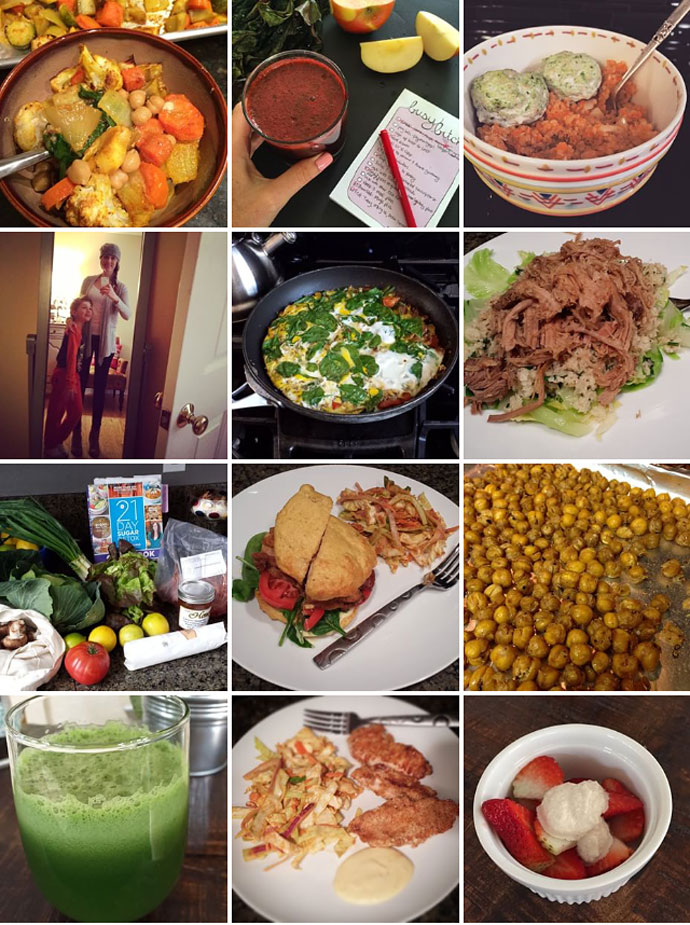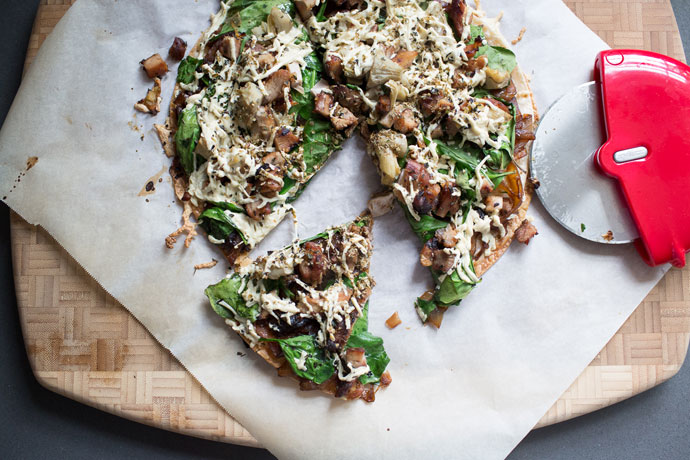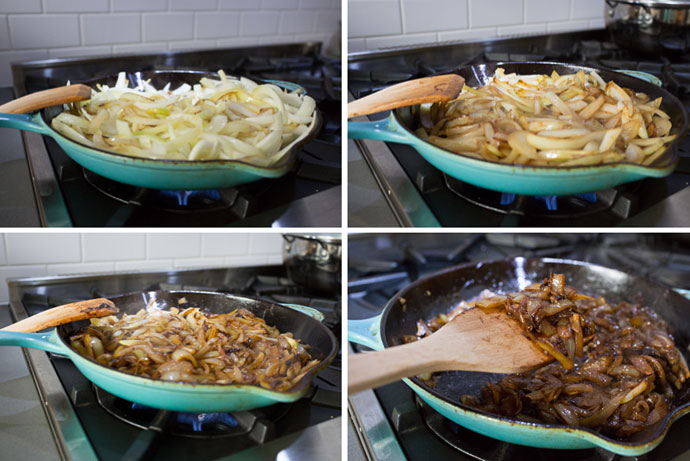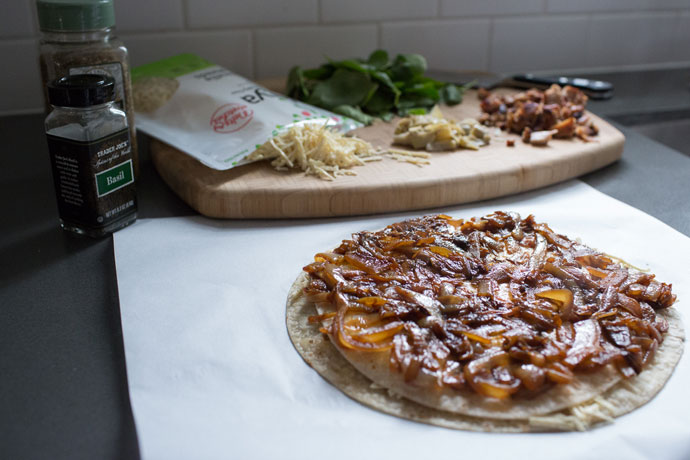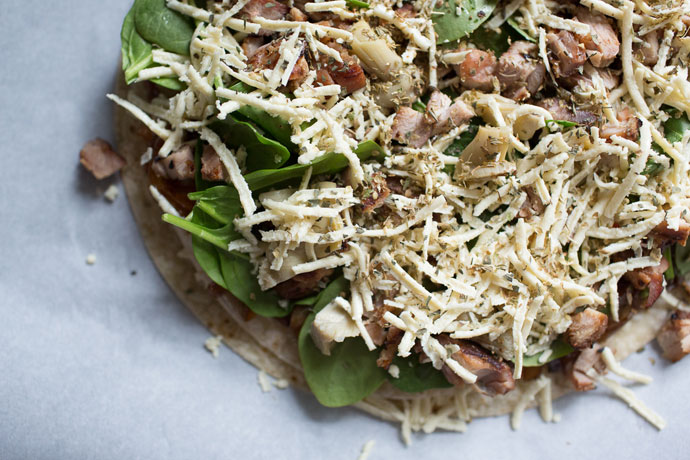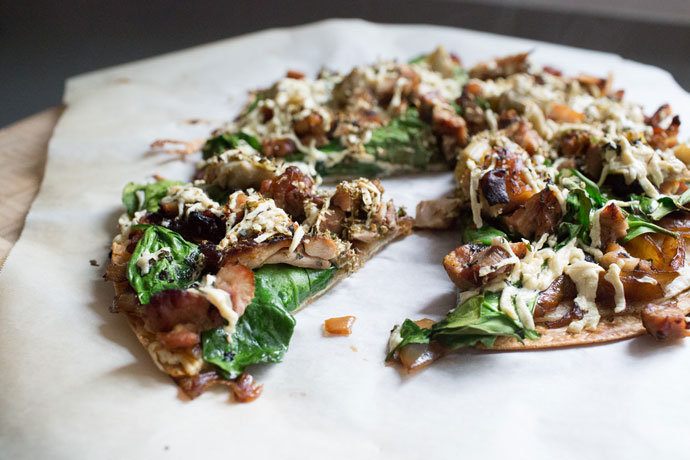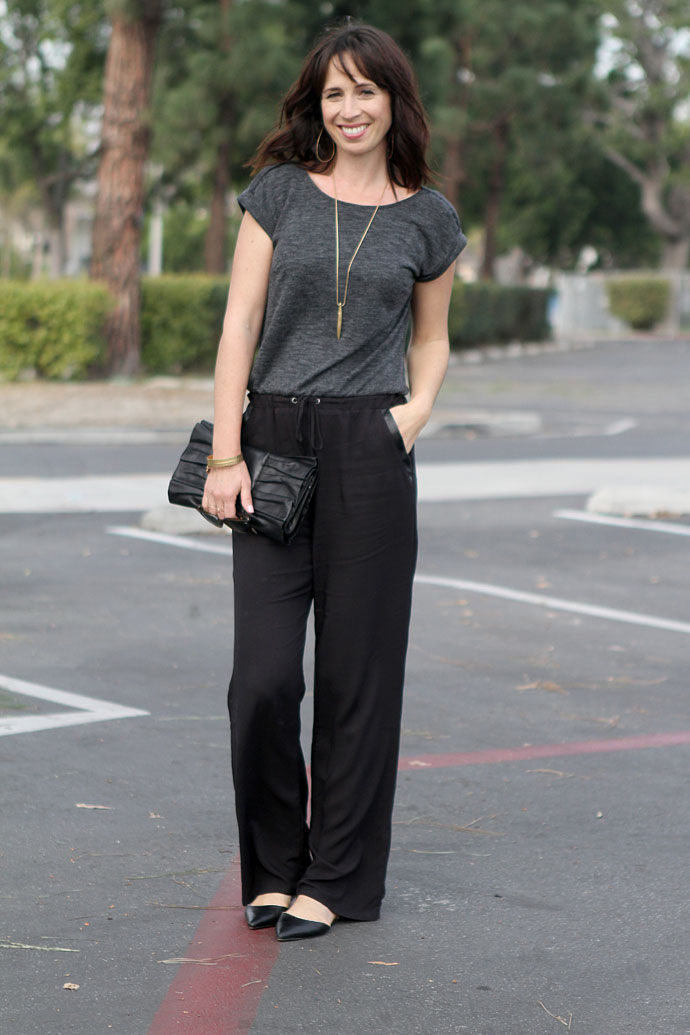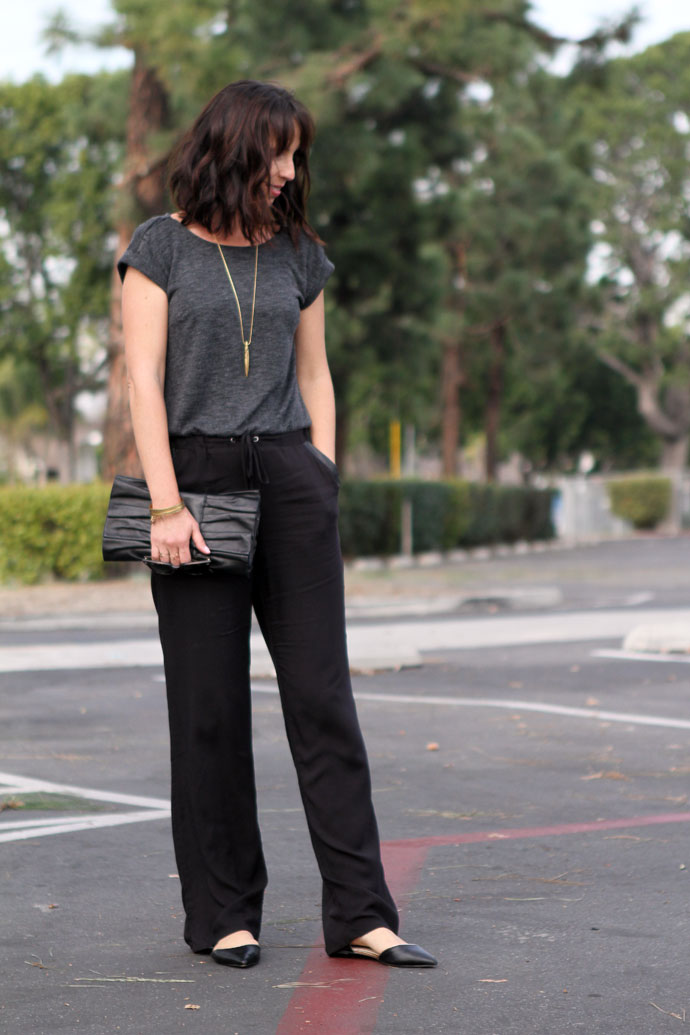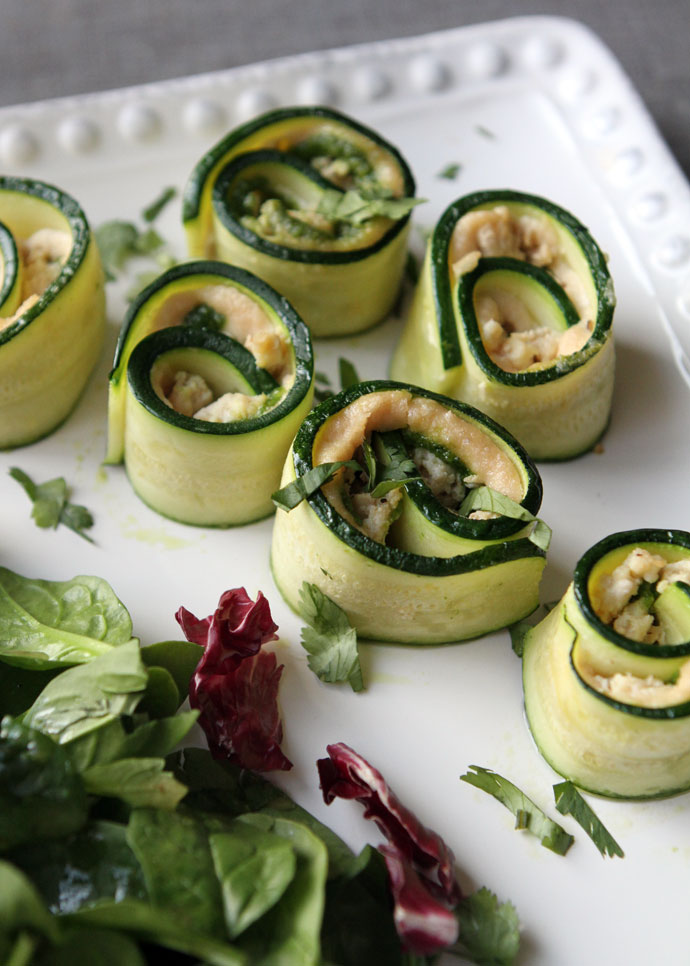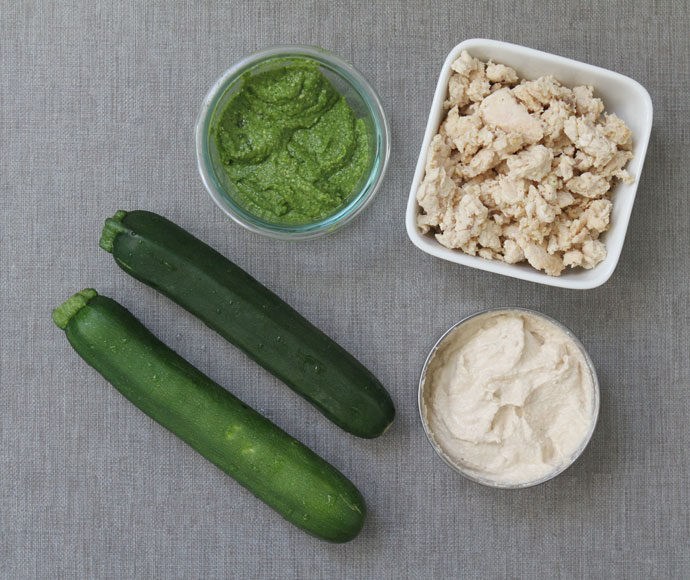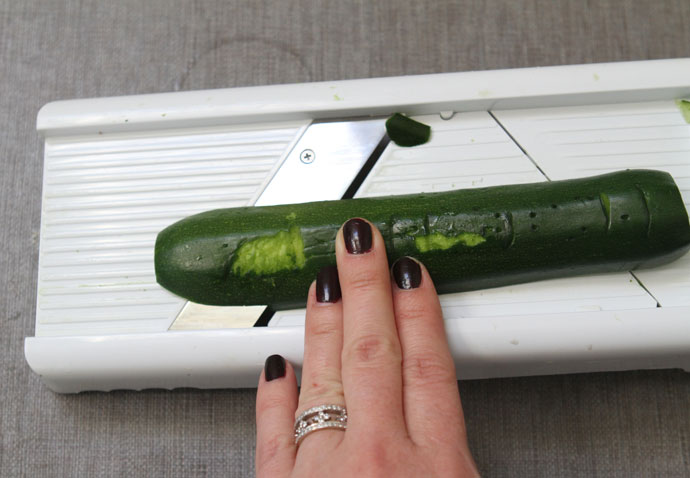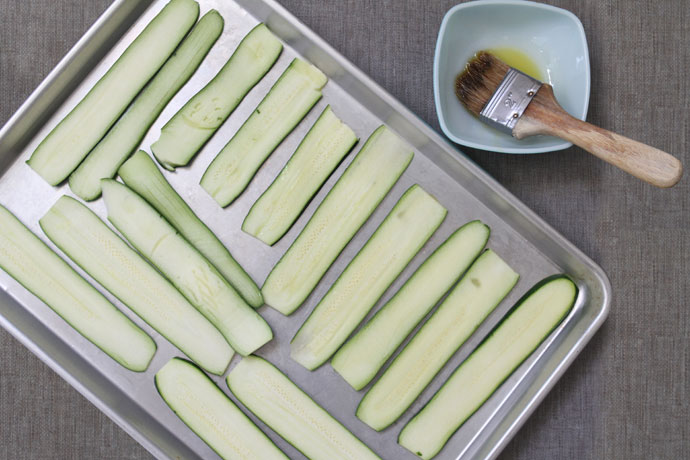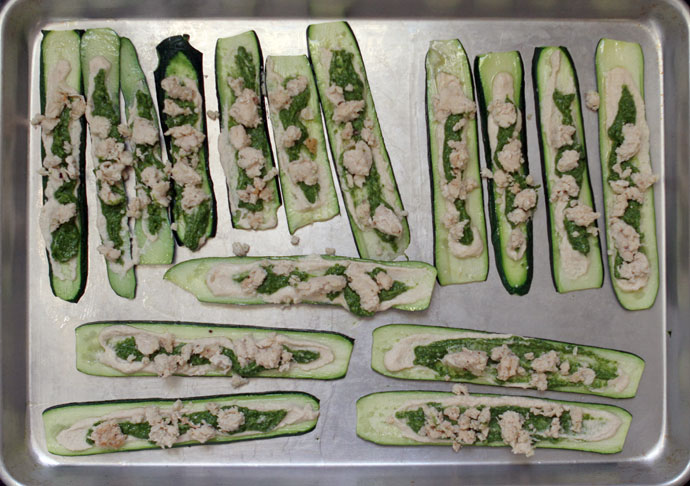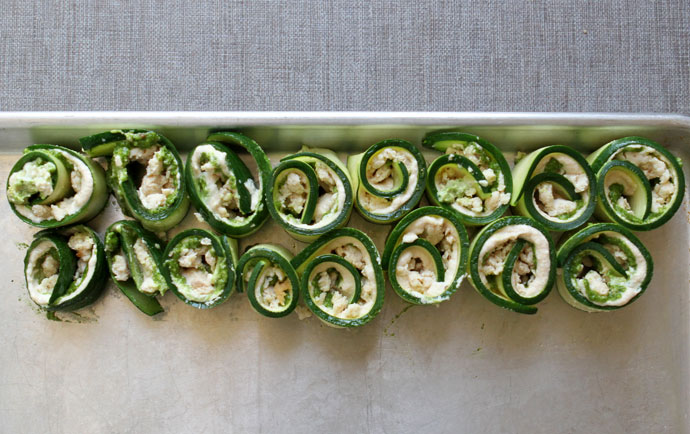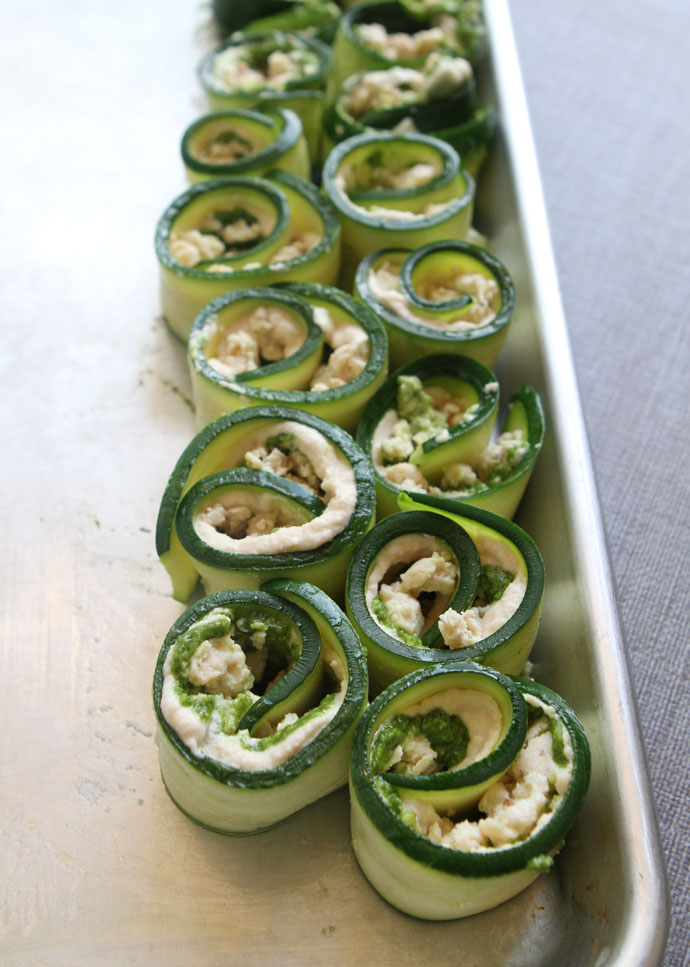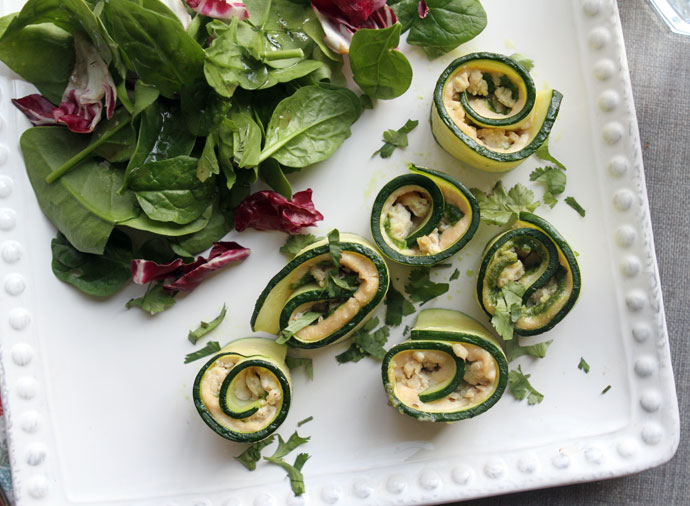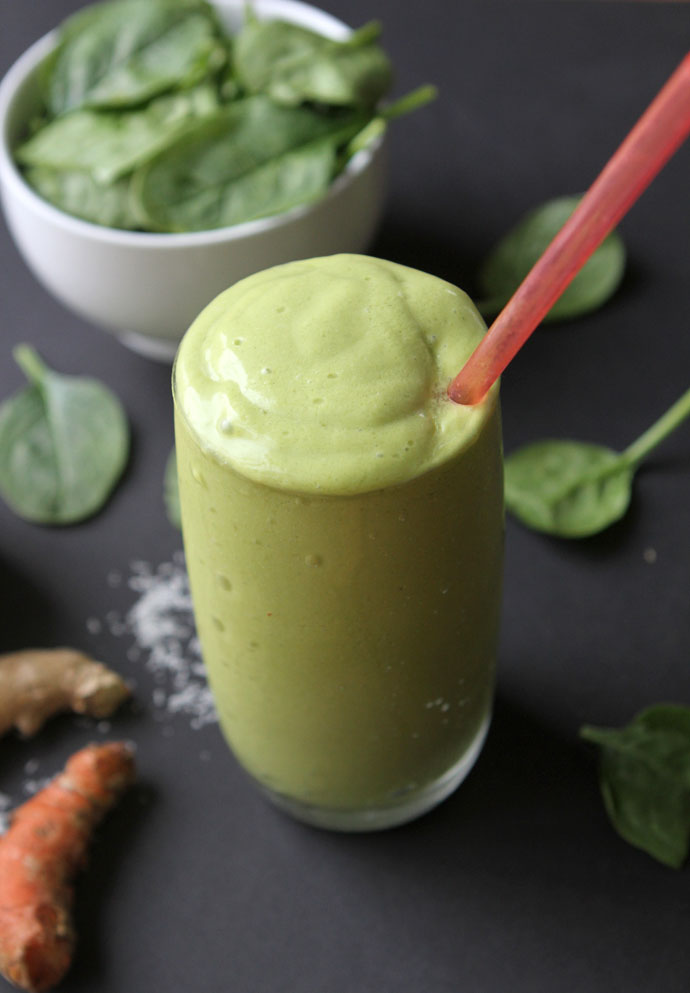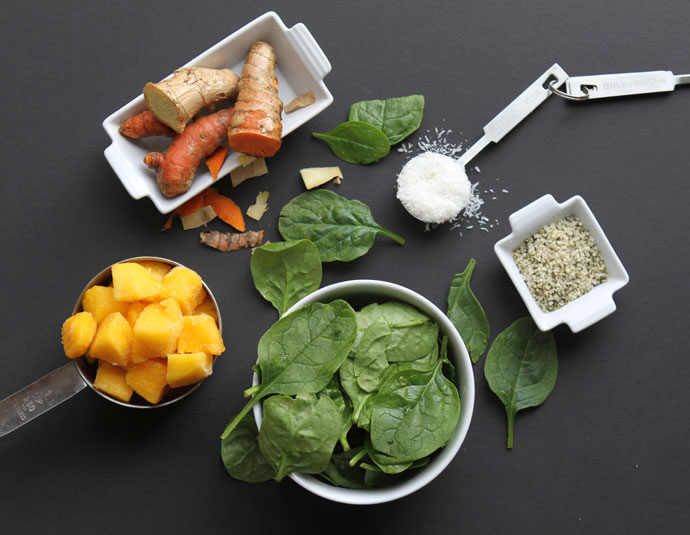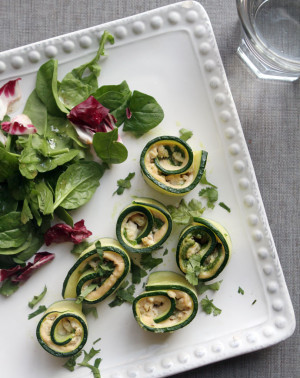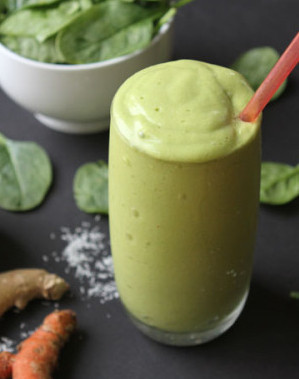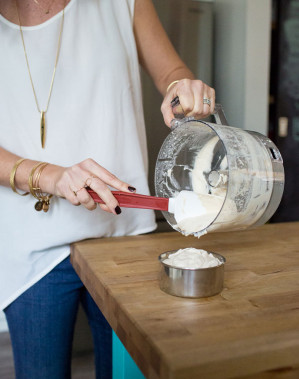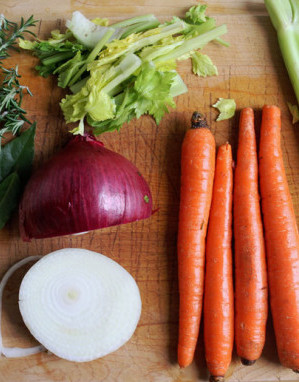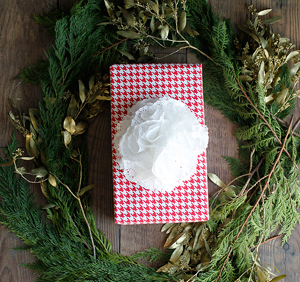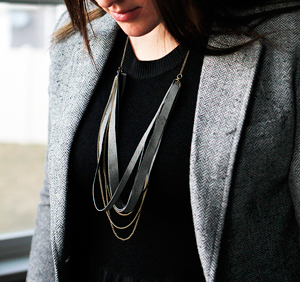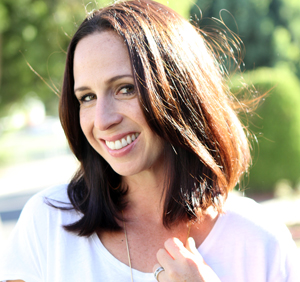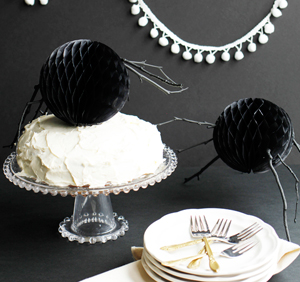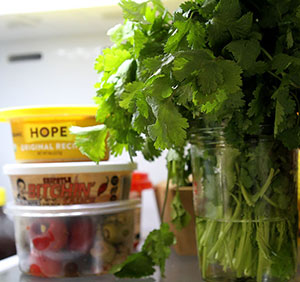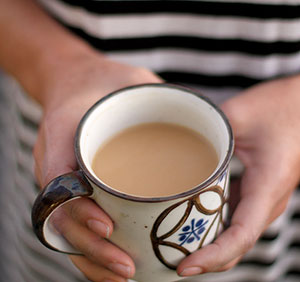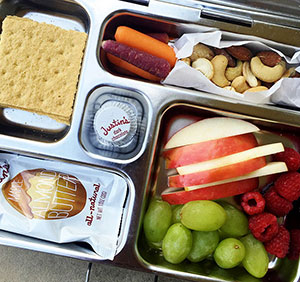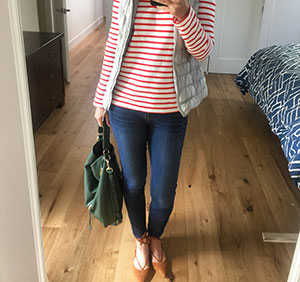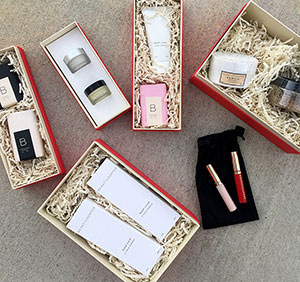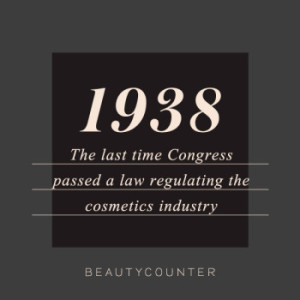January 29, 2015
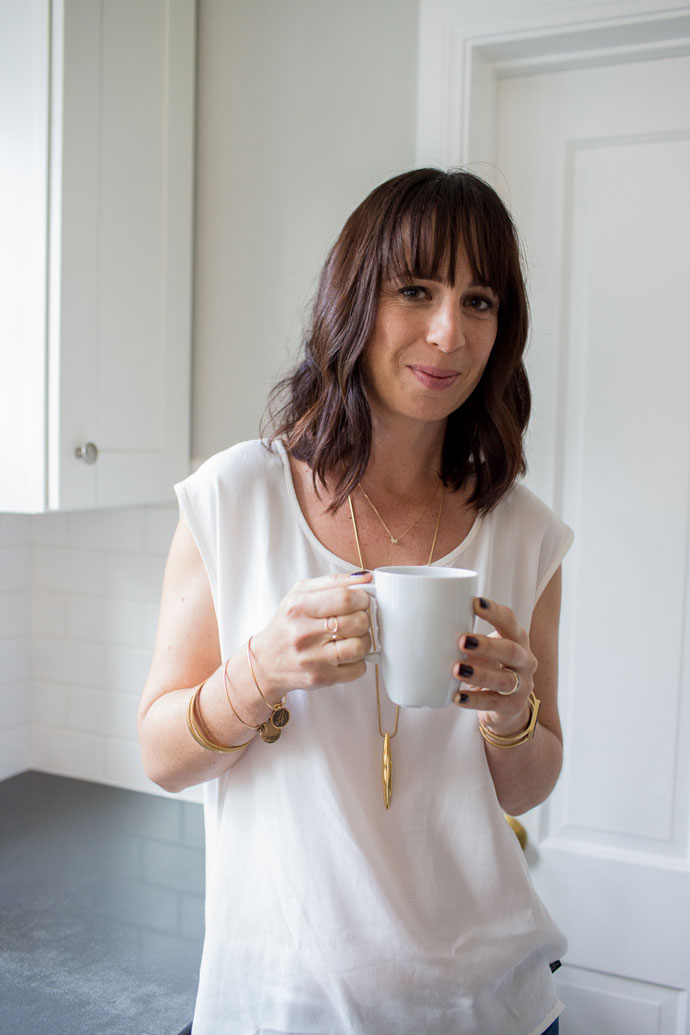 The question I get asked most often, when readers inquire about the change in my eating habits, is how I was able to get rid of CoffeeMate. From the way folks react with shock horror, when you suggest eliminating the nondairy creamer from their daily routine, you’d think they were more attached to the ritual of using CoffeeMate, than to the actual coffee itself. Many indicate they can’t fathom drinking coffee without the rich creaminess of CoffeeMate, and while I used to relate, as I glugged my cup 1/4 full with the stuff, I now wonder why you’d drink something you’d only find palatable with an add-in.
The question I get asked most often, when readers inquire about the change in my eating habits, is how I was able to get rid of CoffeeMate. From the way folks react with shock horror, when you suggest eliminating the nondairy creamer from their daily routine, you’d think they were more attached to the ritual of using CoffeeMate, than to the actual coffee itself. Many indicate they can’t fathom drinking coffee without the rich creaminess of CoffeeMate, and while I used to relate, as I glugged my cup 1/4 full with the stuff, I now wonder why you’d drink something you’d only find palatable with an add-in.
The road from CoffeeMate addict to straight black coffee drinker took some time, and I did some experimenting along the way. But I did eventually throw our Costco sized jugs of CoffeeMate in the trash, and then eventually switched to drinking decaf on a daily basis. I’m not suggesting or saying you have to go to as an extreme of a measure as I did, by eliminating caffeine all the way, but I hope that I can at least get you thinking about ditching the fake creamer, and maybe trying some better tasting coffee. I’ll start by saying that I was probably a lot like you – addicted to the taste of flavored creamers, and even more addicted to caffeine. I would drink multiple cups a day, at least 2 but some days 3, and would drink iced tea throughout the day, every day. If it was 10 am and I still had not had a cup of coffee, I was not a happy person and felt awful.
Why I ditched CoffeeMate
Why be concerned about ditching the flavored nondairy creamer? Well for starters, it’s made with hydrogenated oils, which is another name for trans fats, and reliable study after study have proven trans fats to be bad stuff. This isn’t conspiracy theory fear mongering stuff, trans fats are agreed to be dangerous to cardiovascular health by pretty respectable doctors and organizations, including the American Heart Association, which recommends cutting the stuff out of your diet as much as humanly possible (some trans fats are naturally occurring in animal products, but the hydrogenated kind found in CoffeeMate, is made cheaply and harshly with a chemical process).
Beyond the hydrogenated oils, it contains corn syrup, artificial flavors and other processed ingredients I can’t even pronounce. But this isn’t supposed to be a guilt trip, just a rundown of why I wanted to get rid of the stuff. Having never met either of my grandfathers because they died of heart attacks, and losing both of my grandmothers due to stroke and heart attack, cardiovascular health ranks pretty high up there for me. Even though I work out consistently and at the time ate pretty well, I really wanted to give it my best efforts to ditch things that weren’t only artificial and highly processed, but also things that I knowingly knew were bad for me. Heart disease clearly runs in my family, so this became a blaring red flag for me.
CoffeeMate alternatives
When I threw out my bottles of the stuff, I became desperate to find something to replace that sweet creamy flavor I had grown accustomed to drinking for years. I tried several brands of almond milk flavored creamer, soy creamer, coconut milk creamer. I tried bulletproof coffee, made with a concoction of ghee or butter and other stuff, but it was too oily for me. Eventually it was suggested I try good old full fat half and half, with a dash of real maple syrup, and for months, that was my go-to every morning. Every bit as creamy and tasty as my previous CoffeeMate, I was happy to swill my newly flavored cup of coffee, made with real ingredients. I tell this to anyone trying to make the switch to go this route first. If you don’t love it, give it at least a week and eventually your taste buds will change and will start craving the super sweetness every morning.
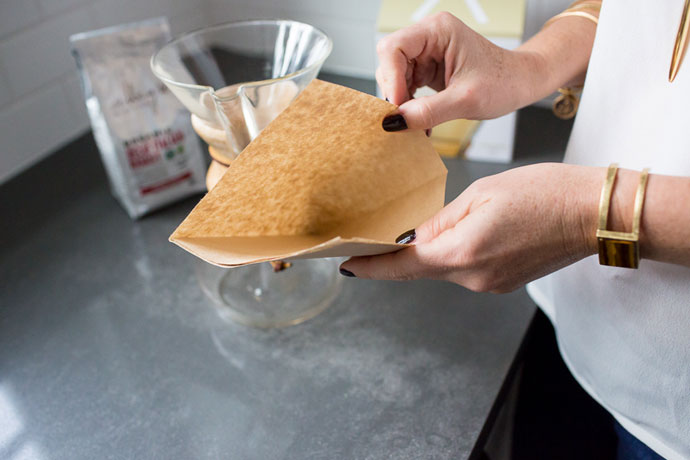
Switching from my Keurig to a Chemex
After switching up my creamer, the next change to come was the process in which I made my coffee. For years we had been brewing out of a Keurig, and while at the time, the recent news coverage of Keurigs’ harboring mold and bacteria proved to be a little over-hyped, I did notice that my coffee just tasted funky most of the time. I was never and still don’t claim to be some sort of coffee snob, but even I was noticing a funky smell coming out of my pods, which transferred to my cup of brewed coffee. A sort of soapy smell, I actually returned several boxes of pods because they just wreaked. I also was more often getting a lot of heartburn after I drank my morning cup of coffee, something I had experienced before but was growing in frequency, perhaps the older I got.
I happened upon an event hosted by local roasters Heartbreak Coffee, and it was that day I tasted my first true cup of coffee. Flavorful, rich but also subtle in taste, I literally had one of those aha moments and said to my friends, “So this is what coffee is supposed to taste like?!?” It sounds so silly and cliche, but that cup of coffee changed how I viewed coffee, and made me realize just how good coffee was supposed to taste, all on its own. There was no need to mask this flavor with creamers and sweeteners, as to do so would hide the flavor of the beans. And from that moment on I was a changed coffee drinker.
I took home some beans, and the next day I ordered a Chemex. After doing some research, I found out that the Chemex’s unique filtration system and paper filters, were able to draw out the bitterness of most coffees, and actually made for a smoother cup of coffee. Lower acidity and bitterness also meant my heartburn could maybe find some comfort, because actually giving up coffee sounded like a silly solution to me 😉
While it took some getting used to at first, the Chemex is the only way I brew now. I know some people love French Presses, and I tried one at first, but it was still to strong, bitter and irritating to me. I brew with the Chemex because it not only tastes better to me, but it also is easier on me. I haven’t suffered from any heartburn or acid reflux since switching to a Chemex.
Another added bonus to me ditching the Keurig, was that I was able to help the environment a bit. While we did have a reusable pod, we rarely used it, and were one of the millions of people buying one of the billions of pods produced each year. Keurig pods are non-recyclable, and last year over 9.5 billion cups were produced, enough to circle the earth over 11 times. Even Keurig themselves admit they know this is a huge problem, and have made a company promise to have a recyclable pod available by 2020. That’s still about 50 billion pods away though. *Full disclosure, we still have our machine and keep it in the garage in case we have a big party at some point down the line, but in the last year, have found no need to use it yet. Friends and family would rather patiently wait for a cup from the Chemex.
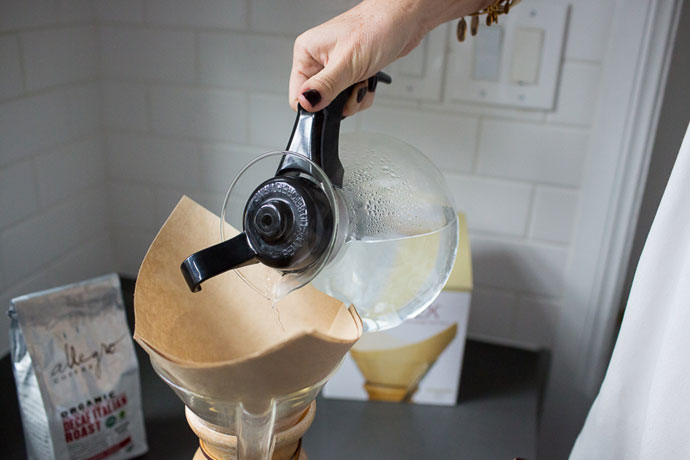
The Chemex Process
I also get a lot of questions about the overall process of the Chemex, and most especially about the time factor. So many of us are so busy and impatient for that first cup of coffee that we’ve helped bolster a business making billions of pods a year. Yes, the Chemex process is more time consuming and labor intensive than a Keurig, and even a standard coffee pot, but it’s something I’m now used to, and have fit into my morning routine. I began with a small 3 cup Chemex, but eventually graduated to a 6 cup, which really only makes about 3 American size mugs of coffee.
- You begin by placing the filter in the vessel, and then moistening it very slightly to preheat the brewer, this step is totally optional though. You then add in your desired amount of grounds.
- You then add a small amount of preheated water to the grounds, just enough to cover them and allow the coffee to “bloom” and release its flavors.
- Once your grounds have bloomed, you begin adding the rest of your water until the desired amount of coffee is ready. You fill the vessel up to 1/4 inch from the top and let it drip through. The whole process takes anywhere from 5-10 minutes depending on the cup size Chemex you have.
While your coffee is drip brewing, make some bacon, pack the kid’s lunches, wipe down the counters, keep your self busy instead of staring at the dripping process. Once your coffee is ready, simply throw out the filter and rinse out the Chemex. Pour a cup and enjoy.
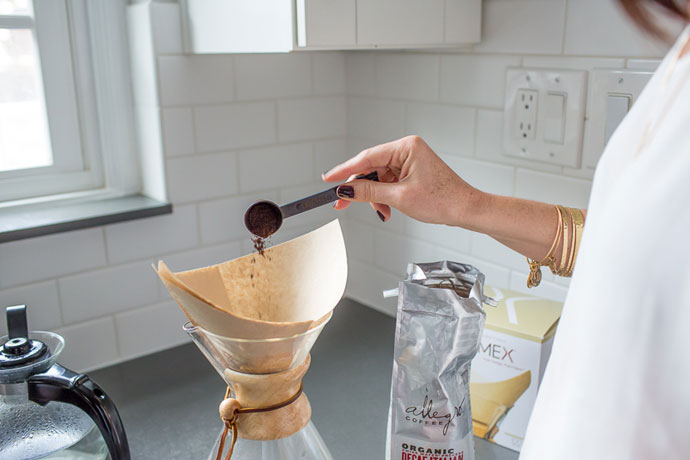
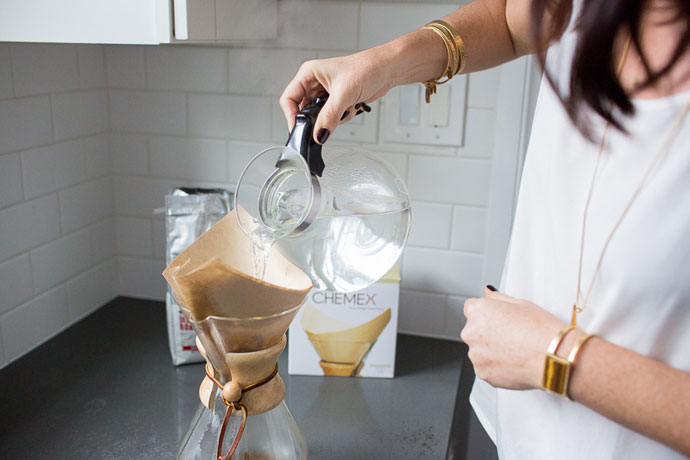
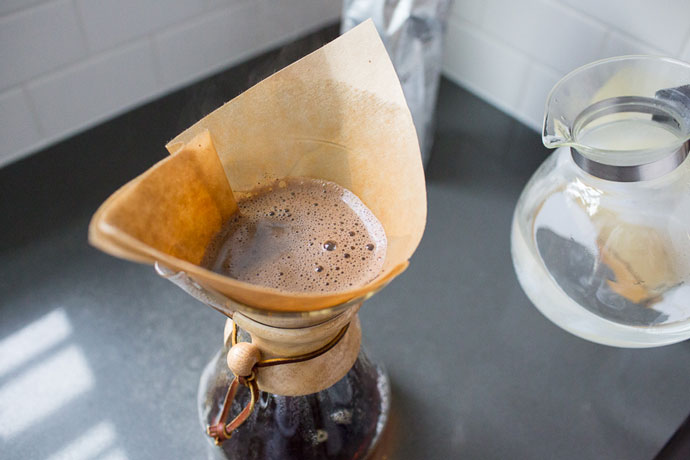
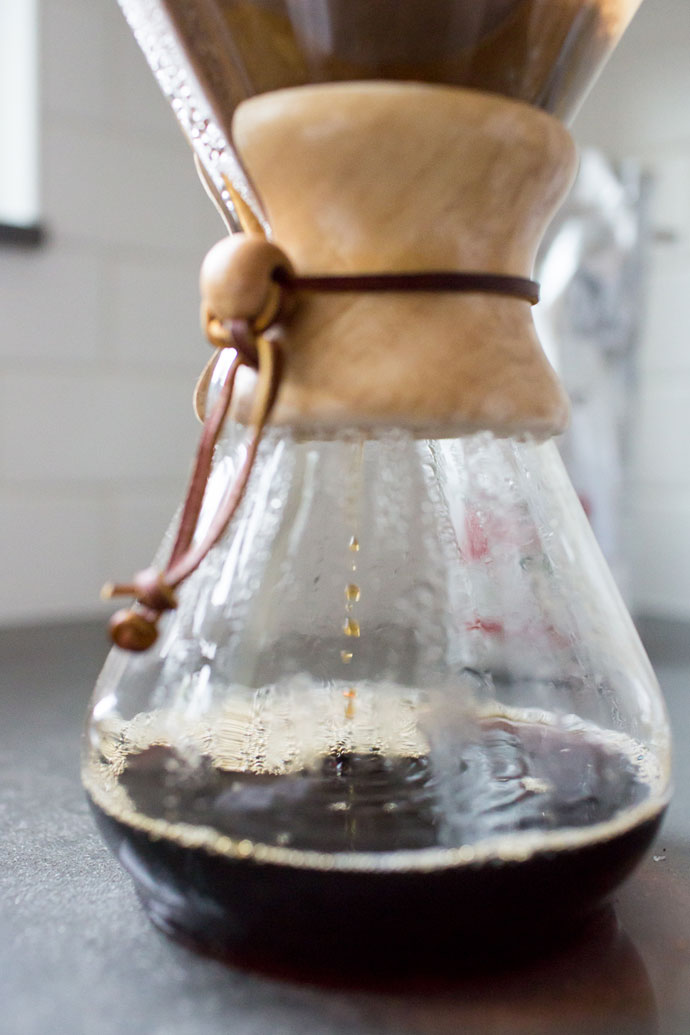
 As I said, the process takes upwards of 5 minutes, and yes, there have been mornings where I just didn’t have the time to make myself a cup of coffee because I overslept or the kid’s schedule was just too busy. I survived and at the time missed the convenience of a regular coffee maker, but overall I’m very pleased about the Chemex. While I think the brewing method can indeed improve the flavor of the coffee, if you begin with crappy coffee, it’s not going to magically make it a good cup of coffee. So I always suggest you focus on investing in some good, quality beans so that you can begin to enjoy the true flavor of a good cup of coffee.
As I said, the process takes upwards of 5 minutes, and yes, there have been mornings where I just didn’t have the time to make myself a cup of coffee because I overslept or the kid’s schedule was just too busy. I survived and at the time missed the convenience of a regular coffee maker, but overall I’m very pleased about the Chemex. While I think the brewing method can indeed improve the flavor of the coffee, if you begin with crappy coffee, it’s not going to magically make it a good cup of coffee. So I always suggest you focus on investing in some good, quality beans so that you can begin to enjoy the true flavor of a good cup of coffee.
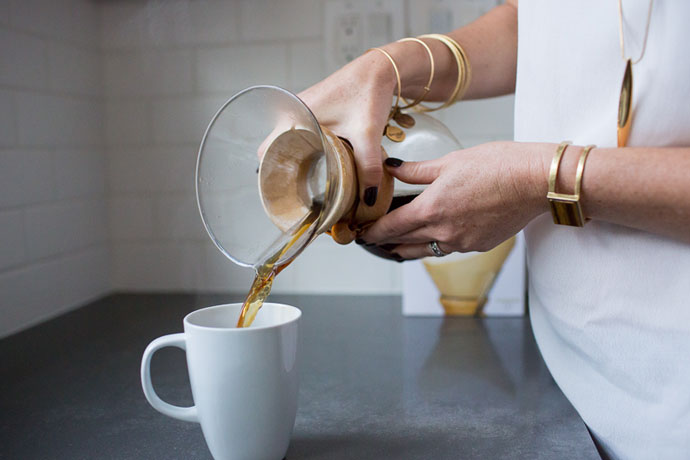 For months I was drinking Chemex brewed coffee with a high quality bean and still adding in my half and half and maple syrup. I eventually knew I needed to cut back some of the costs associated with purchasing more expensive beans, so I started moving over to more affordable, but still decent quality beans, and then eventually eliminated the added cream and sweetener all together. I say this time and time again, but your taste buds really do change over time and get accustomed to different flavors. I eventually grew out of the need for the fake creamer, then I outgrew the need for super expensive beans (although I do enjoy them still!), and then I eventually outgrew the need to have any flavoring at all.
For months I was drinking Chemex brewed coffee with a high quality bean and still adding in my half and half and maple syrup. I eventually knew I needed to cut back some of the costs associated with purchasing more expensive beans, so I started moving over to more affordable, but still decent quality beans, and then eventually eliminated the added cream and sweetener all together. I say this time and time again, but your taste buds really do change over time and get accustomed to different flavors. I eventually grew out of the need for the fake creamer, then I outgrew the need for super expensive beans (although I do enjoy them still!), and then I eventually outgrew the need to have any flavoring at all.
Ditching the Caffeine
Again, I want to reiterate that I’m not suggesting you have to ditch everything from the creamer to the beans to the Keurig to the caffeine, even if you just ditch a portion you’ll be making improvements to your health, the environment and even just your cup of coffee. But going to a caffeine free life is a story worth telling, because months later I still can’t believe I made the switch.
After I did my first round of the 21 day cleanse, I noticed how much more energy I had, and how I rarely got the afternoon slump, something I experienced every single day before. After digging around, it appeared the coffee, and my need to drink it very first thing in the morning when I was still all groggy, was messing with my natural body rhythms and making me even more tired, instead of jolting me awake. So I decided to just stay off the stuff, and only drink it when a good cup of coffee presented itself to me, or when I really needed a good caffeine jolt.
You see, after drinking it for so long, the caffeine had pretty much lost its effectiveness on me, and I became immune to the stuff, yet I was still heavily addicted to it. When I went through those withdrawals, they were brutal, and so since I had gone 3 weeks without the stuff and felt decidedly better, I figured I may as well just stay off the stuff. I still drink truly decaffeinated coffee every morning, using beans that are decaffeinated with the Swiss Water Method, taking out 99.9% of the caffeine from the beans. Regular decaf still has anywhere from 7-20 mg of caffeine in each cup, and I’ll drink the stuff when I go to a coffee shop, but I don’t make it a regular part of my routine so I don’t get addicted to the stuff again.
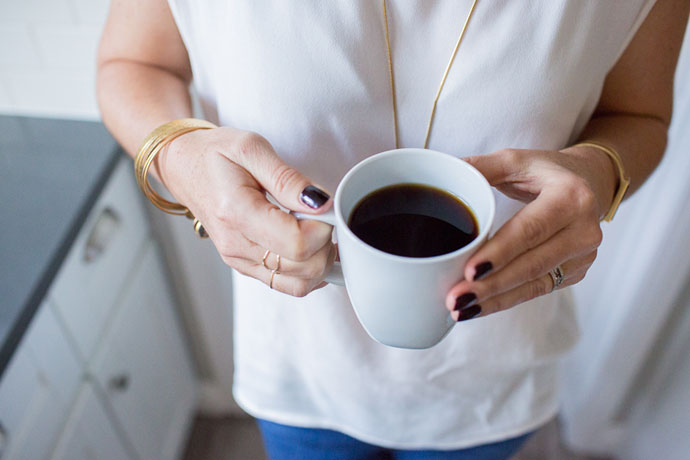 I still love a rich and frothy latte or a creamy cup of coffee as a special treat, but now it’s not something I crave every single day, multiple times a day. I’m embarrassed to admit, but there were plenty of days in my previous life, where I would visit a coffee shop two times a day for a hit, or brew multiple pots of coffee, some at 10 o’clock at night because I was trying to fight sleep. Taking my coffee so simply now has not only reduced my cravings for the rich sweetness of coffee-house beverages, but it’s also saved me a lot of money. I also listen to my body more and actually rest, when it’s trying to tell me to rest. While I rarely get the afternoon slump, I do make myself get more sleep at night because I know I’m gonna be running on my own energy throughout the day.
I still love a rich and frothy latte or a creamy cup of coffee as a special treat, but now it’s not something I crave every single day, multiple times a day. I’m embarrassed to admit, but there were plenty of days in my previous life, where I would visit a coffee shop two times a day for a hit, or brew multiple pots of coffee, some at 10 o’clock at night because I was trying to fight sleep. Taking my coffee so simply now has not only reduced my cravings for the rich sweetness of coffee-house beverages, but it’s also saved me a lot of money. I also listen to my body more and actually rest, when it’s trying to tell me to rest. While I rarely get the afternoon slump, I do make myself get more sleep at night because I know I’m gonna be running on my own energy throughout the day.
I’m no saint, and this is just one part of my overall day, in which I have plenty of cravings and make plenty of “bad” decisions, but I’m happy to finally have this whole caffeine and CoffeeMate addiction thing figured out. Let me know if you have any questions.
Are you a CoffeeMate addict, or have you been able to ditch the stuff? How did you go about it?
All photos by the Yung Bean Photography
